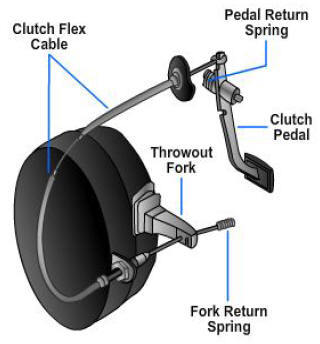kanibaltaki
Industrial
hey
i just want to test the clutch cable life and i dont know how to do it
could anyone propose a mechanism or some examples of testing the clutch cable life
How many times i can clutch with this cable besfor the cable be dameged
i want some thing similar to the picture

i want to replace the foot of the driver by a pneumatic cylinder to push the pedal with the same force as the human foot force

thank you
i just want to test the clutch cable life and i dont know how to do it
could anyone propose a mechanism or some examples of testing the clutch cable life
How many times i can clutch with this cable besfor the cable be dameged
i want some thing similar to the picture

i want to replace the foot of the driver by a pneumatic cylinder to push the pedal with the same force as the human foot force

thank you
